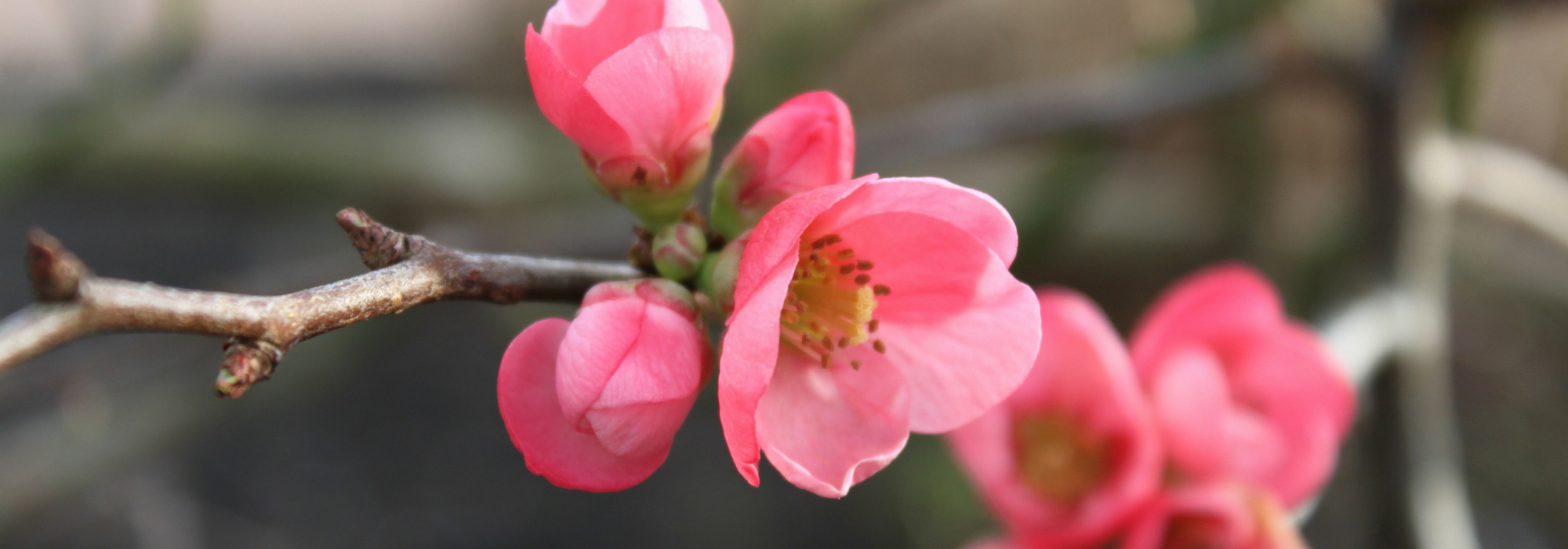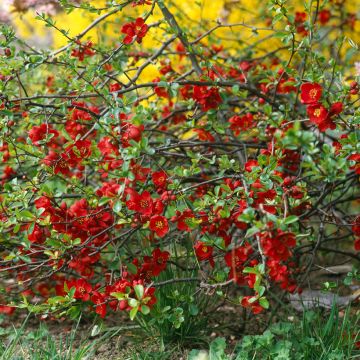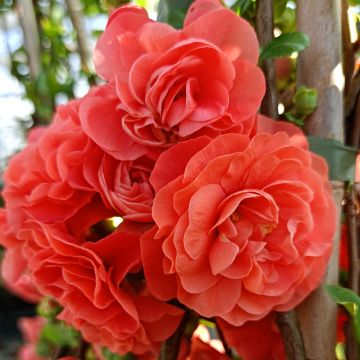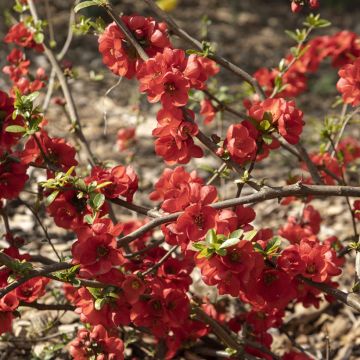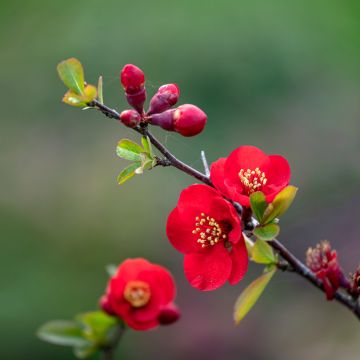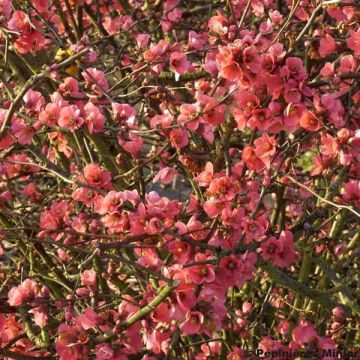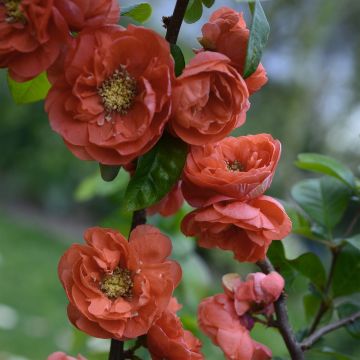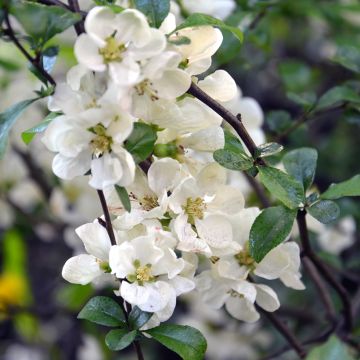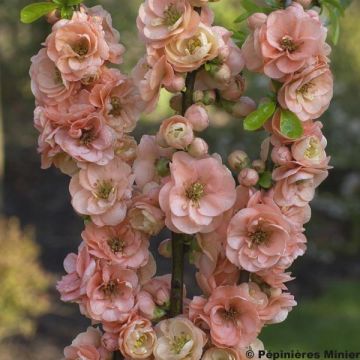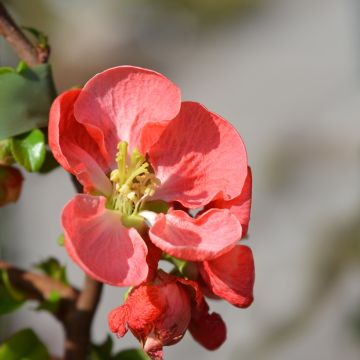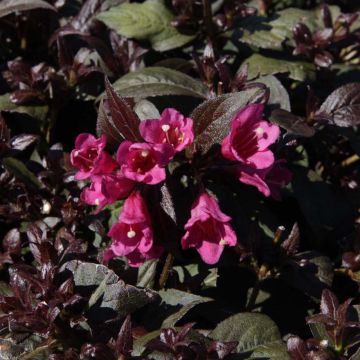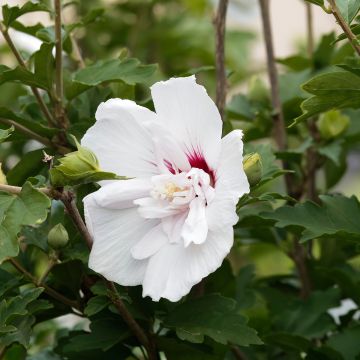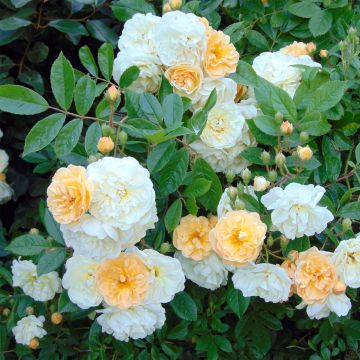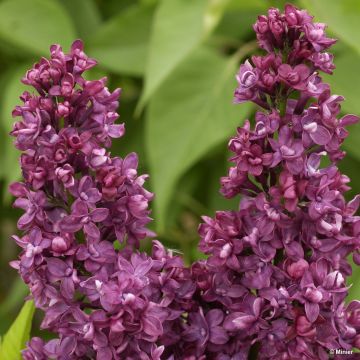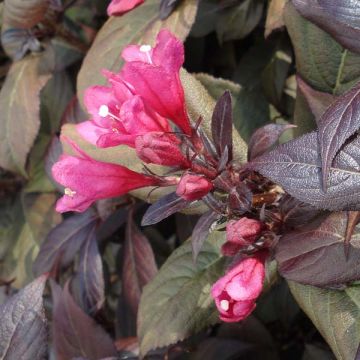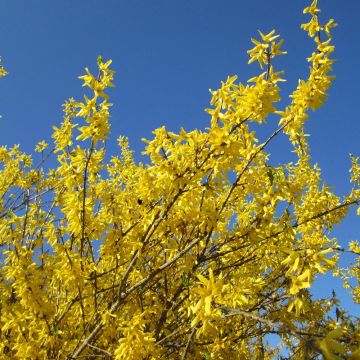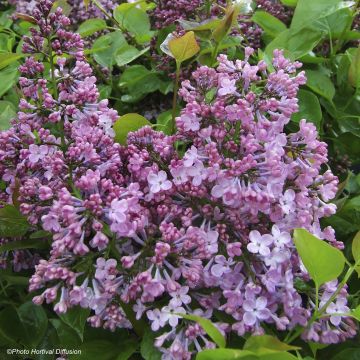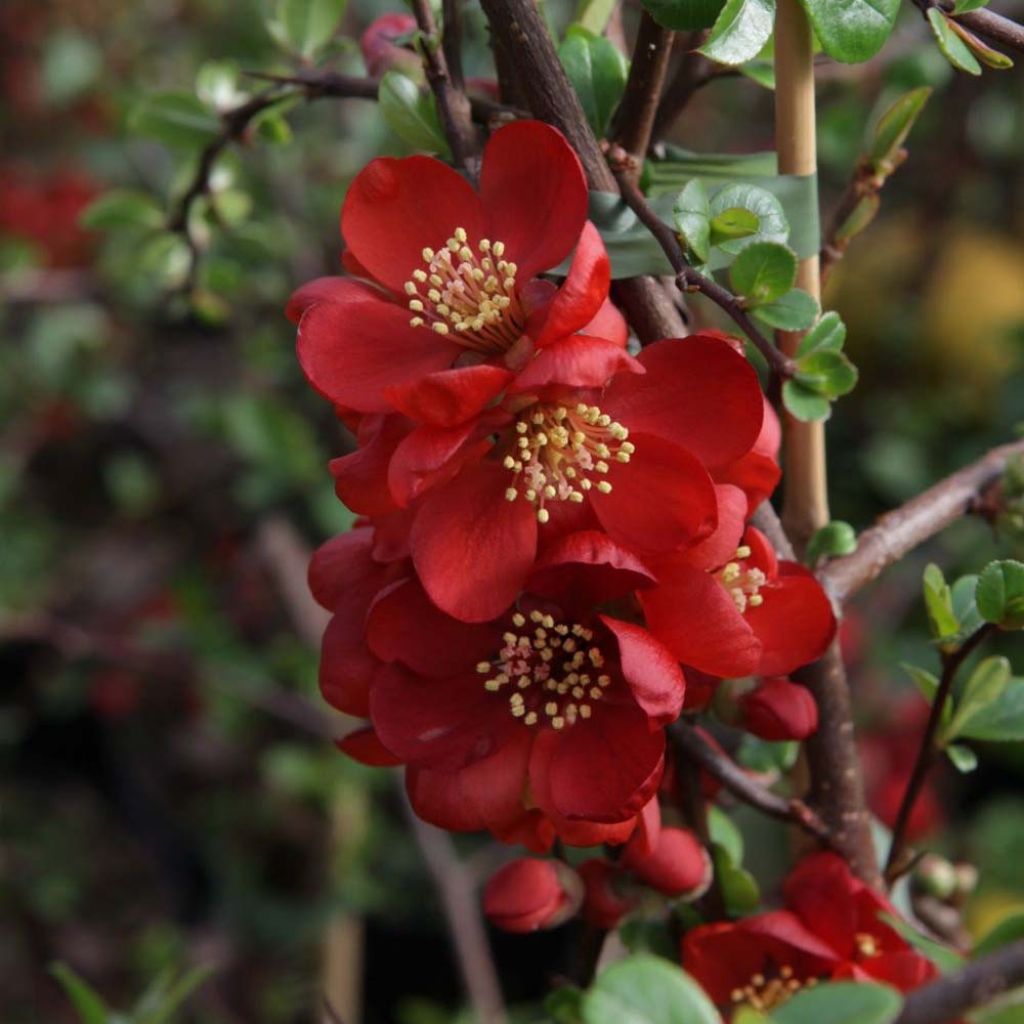

Chaenomeles superba Elly Mossel - Flowering Quince
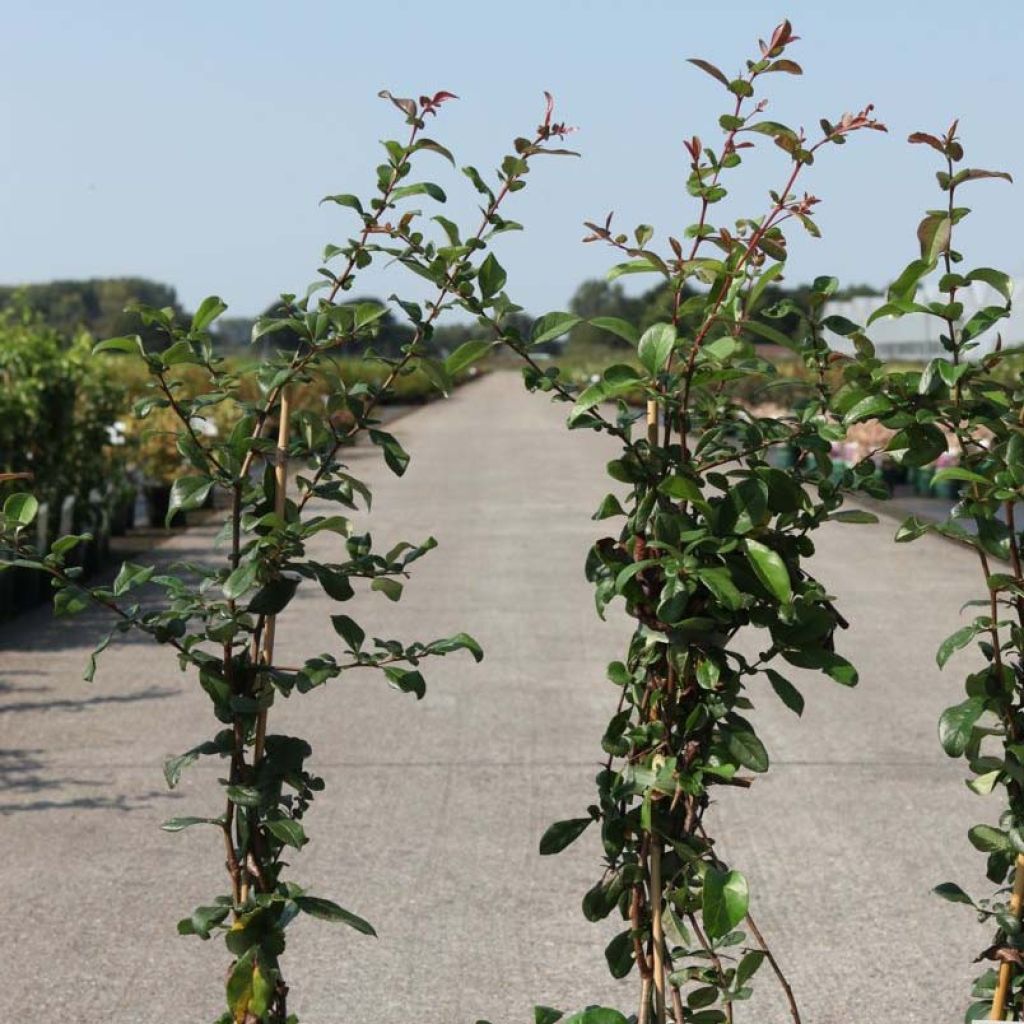

Chaenomeles superba Elly Mossel - Flowering Quince
Chaenomeles superba Elly Mossel - Flowering Quince
Chaenomeles x superba Elly Mossel
Japanese Quince, Flowering quince
Many difficulties to flourish, remains stunted despite a proper planting.
Christine, 20/11/2022
Special offer!
Receive a €20 voucher for any order over €90 (excluding delivery costs, credit notes, and plastic-free options)!
1- Add your favorite plants to your cart.
2- Once you have reached €90, confirm your order (you can even choose the delivery date!).
3- As soon as your order is shipped, you will receive an email containing your voucher code, valid for 3 months (90 days).
Your voucher is unique and can only be used once, for any order with a minimum value of €20, excluding delivery costs.
Can be combined with other current offers, non-divisible and non-refundable.
Home or relay delivery (depending on size and destination)
Schedule delivery date,
and select date in basket
This plant carries a 24 months recovery warranty
More information
We guarantee the quality of our plants for a full growing cycle, and will replace at our expense any plant that fails to recover under normal climatic and planting conditions.
Would this plant suit my garden?
Set up your Plantfit profile →
Description
Chaenomeles x superba 'Elly Mossel' is a variety producing an abundance of large red flowers on bare branches in spring. This deciduous and elegant bush has a rounded shape with thorny and dense branches. It is ideal for defensive hedges. It bears shiny medium green foliage. Its bright spring flowering is followed by yellow fruits in autumn that can be used for making jelly when ripe. It is very vigorous and hardy, and thrives in well-drained soil that is not too dry or too chalky. It prefers a sunny to semi-shaded exposure. Perfect when trained against a wall.
Chaenomeles x superba is a horticultural hybrid obtained around 1900 by G. Frahm in a German nursery. It is the result of cross-breeding between Chaenomeles japonica, the true Japanese quince, and its close relative C. speciosa. These two bushes from the Rosaceae family originate from East Asia and are perfectly cold-resistant.
The cultivar 'Elly Mossel' is a vigorous bush, with fairly rapid growth. It has a dense and rounded habit, which is slightly spreading. At maturity, it reaches an average height of 1.2m (4ft) and a width of 2m (7ft). Its flowering takes place in March-April depending on the region, just before or at the same time as the appearance of the foliage. The flowers bloom on the previous year's branches. The flowers measure 4cm (2in) in diameter and bloom in groups of 3 to 5. Cup-shaped, they are composed of 5 to 8 fiery red petals, surrounding a dark red stamen heart covered in yellow pollen. They are followed by the formation of globular and fragrant yellow fruits, measuring 4 to 5cm (2in) in diameter. Its deciduous foliage, which falls in winter, is dark green in colour, sometimes tinged with purple on young leaves. The entire, elongated oval-shaped leaves measure from 3 to 6cm (2in) long.
The Japanese quince is a very robust plant, to the point that it sometimes survives amidst brambles in old abandoned hedges. It can be used in flowerbeds, as an informal or defensive hedge, or even in pots on a terrace or balcony. Bonsai enthusiasts also appreciate it. In a defensive hedge, it can be planted, for example, with rugosa roses, barberries, Poncirus trifoliata, Pyracantha, hawthorn, or sea buckthorn (Hippophae rhamnoides). Two or three vigorous climbing roses like 'Mermaid' or 'Paul's Himalayan Musk' placed between these bushes will further discourage wanderers or opportunists of all kinds from eating your strawberries, flowers, or apples.
An extract called cananga essential oil is obtained from the fruit, which should not be confused with the one extracted from Cananga odorata, the Ylang-ylang. It is also a medicinal plant.
Chaenomeles superba Elly Mossel - Flowering Quince in pictures






Plant habit
Flowering
Foliage
Botanical data
Chaenomeles
x superba
Elly Mossel
Rosaceae
Japanese Quince, Flowering quince
Cultivar or hybrid
Other Chaenomeles - Quince tree
View all →Planting and care
Chaenomeles 'Elly Mossel' thrives in the sun. You can also grow it in partial shade, in sunnier regions. Plant it in ordinary, moist but well-drained soil. It will tolerate drought after 3 years of cultivation. It also tolerates limestone. It is a very easy plant to grow. When planting, mix your soil with compost. When grown as a hedge, space the plants 80cm (32in) apart. In a flower bed, the plants should be spaced 40 to 60cm (16 to 24in) apart. This Japanese quince is resistant to pollution. It requires little maintenance, apart from occasionally pruning the longest branches in spring, as they can become less floriferous.
Planting period
Intended location
Care
Planting & care advice
-
, onOrder confirmed
Reply from on Promesse de fleurs
Similar products
Haven't found what you were looking for?
Hardiness is the lowest winter temperature a plant can endure without suffering serious damage or even dying. However, hardiness is affected by location (a sheltered area, such as a patio), protection (winter cover) and soil type (hardiness is improved by well-drained soil).

Photo Sharing Terms & Conditions
In order to encourage gardeners to interact and share their experiences, Promesse de fleurs offers various media enabling content to be uploaded onto its Site - in particular via the ‘Photo sharing’ module.
The User agrees to refrain from:
- Posting any content that is illegal, prejudicial, insulting, racist, inciteful to hatred, revisionist, contrary to public decency, that infringes on privacy or on the privacy rights of third parties, in particular the publicity rights of persons and goods, intellectual property rights, or the right to privacy.
- Submitting content on behalf of a third party;
- Impersonate the identity of a third party and/or publish any personal information about a third party;
In general, the User undertakes to refrain from any unethical behaviour.
All Content (in particular text, comments, files, images, photos, videos, creative works, etc.), which may be subject to property or intellectual property rights, image or other private rights, shall remain the property of the User, subject to the limited rights granted by the terms of the licence granted by Promesse de fleurs as stated below. Users are at liberty to publish or not to publish such Content on the Site, notably via the ‘Photo Sharing’ facility, and accept that this Content shall be made public and freely accessible, notably on the Internet.
Users further acknowledge, undertake to have ,and guarantee that they hold all necessary rights and permissions to publish such material on the Site, in particular with regard to the legislation in force pertaining to any privacy, property, intellectual property, image, or contractual rights, or rights of any other nature. By publishing such Content on the Site, Users acknowledge accepting full liability as publishers of the Content within the meaning of the law, and grant Promesse de fleurs, free of charge, an inclusive, worldwide licence for the said Content for the entire duration of its publication, including all reproduction, representation, up/downloading, displaying, performing, transmission, and storage rights.
Users also grant permission for their name to be linked to the Content and accept that this link may not always be made available.
By engaging in posting material, Users consent to their Content becoming automatically accessible on the Internet, in particular on other sites and/or blogs and/or web pages of the Promesse de fleurs site, including in particular social pages and the Promesse de fleurs catalogue.
Users may secure the removal of entrusted content free of charge by issuing a simple request via our contact form.
The flowering period indicated on our website applies to countries and regions located in USDA zone 8 (France, the United Kingdom, Ireland, the Netherlands, etc.)
It will vary according to where you live:
- In zones 9 to 10 (Italy, Spain, Greece, etc.), flowering will occur about 2 to 4 weeks earlier.
- In zones 6 to 7 (Germany, Poland, Slovenia, and lower mountainous regions), flowering will be delayed by 2 to 3 weeks.
- In zone 5 (Central Europe, Scandinavia), blooming will be delayed by 3 to 5 weeks.
In temperate climates, pruning of spring-flowering shrubs (forsythia, spireas, etc.) should be done just after flowering.
Pruning of summer-flowering shrubs (Indian Lilac, Perovskia, etc.) can be done in winter or spring.
In cold regions as well as with frost-sensitive plants, avoid pruning too early when severe frosts may still occur.
The planting period indicated on our website applies to countries and regions located in USDA zone 8 (France, United Kingdom, Ireland, Netherlands).
It will vary according to where you live:
- In Mediterranean zones (Marseille, Madrid, Milan, etc.), autumn and winter are the best planting periods.
- In continental zones (Strasbourg, Munich, Vienna, etc.), delay planting by 2 to 3 weeks in spring and bring it forward by 2 to 4 weeks in autumn.
- In mountainous regions (the Alps, Pyrenees, Carpathians, etc.), it is best to plant in late spring (May-June) or late summer (August-September).
The harvesting period indicated on our website applies to countries and regions in USDA zone 8 (France, England, Ireland, the Netherlands).
In colder areas (Scandinavia, Poland, Austria...) fruit and vegetable harvests are likely to be delayed by 3-4 weeks.
In warmer areas (Italy, Spain, Greece, etc.), harvesting will probably take place earlier, depending on weather conditions.
The sowing periods indicated on our website apply to countries and regions within USDA Zone 8 (France, UK, Ireland, Netherlands).
In colder areas (Scandinavia, Poland, Austria...), delay any outdoor sowing by 3-4 weeks, or sow under glass.
In warmer climes (Italy, Spain, Greece, etc.), bring outdoor sowing forward by a few weeks.






























